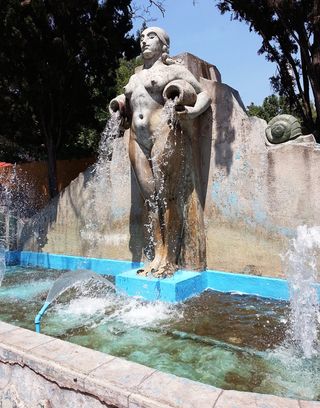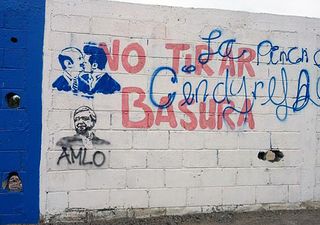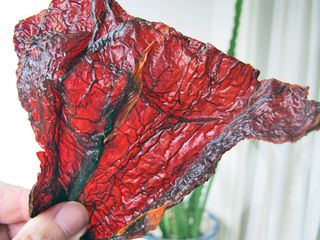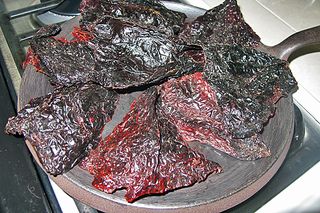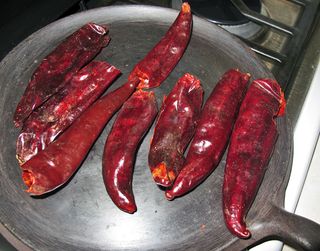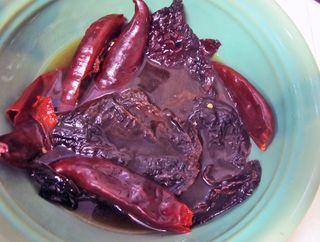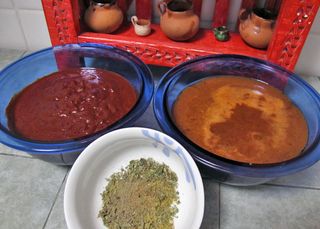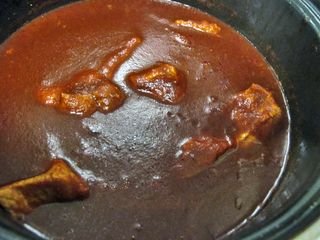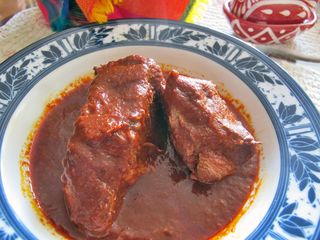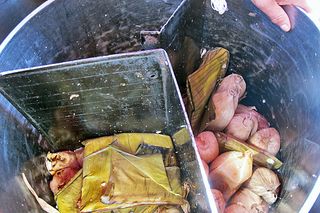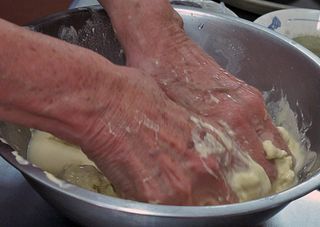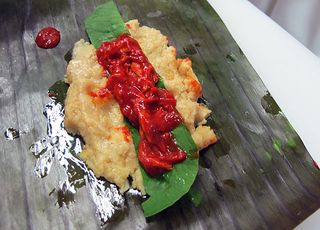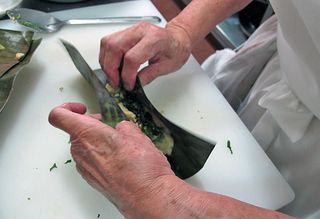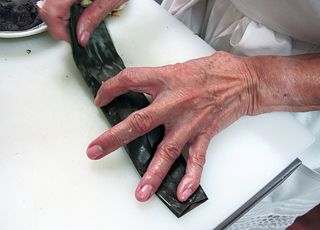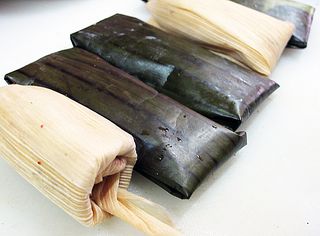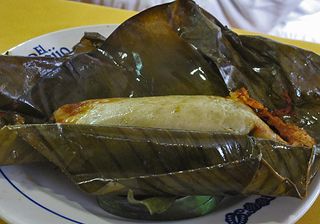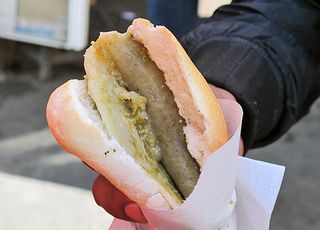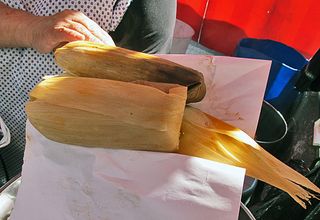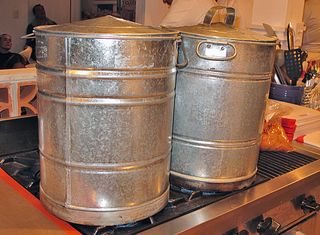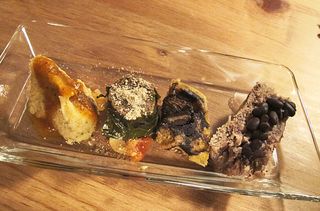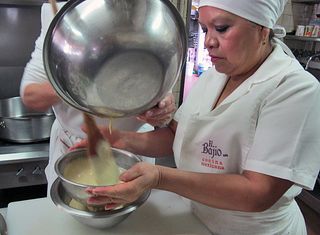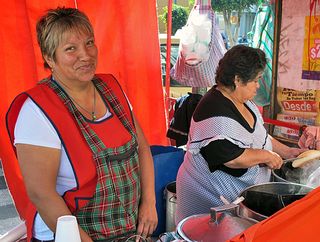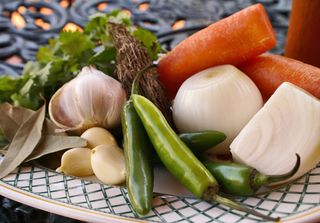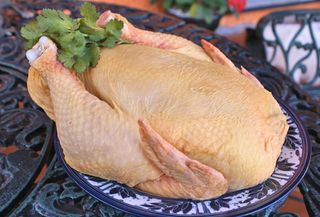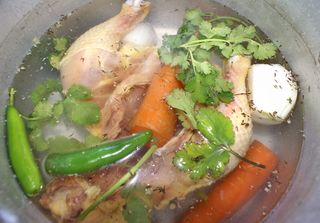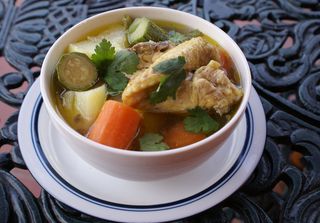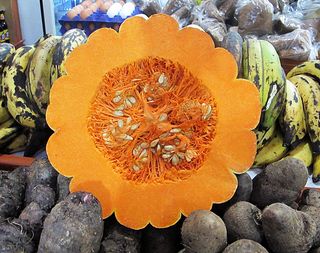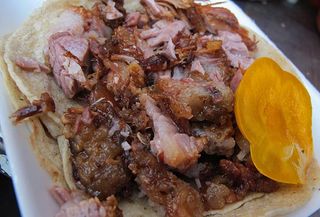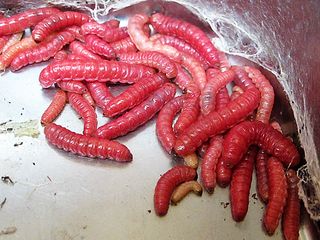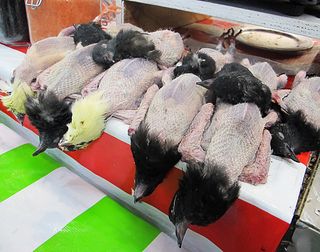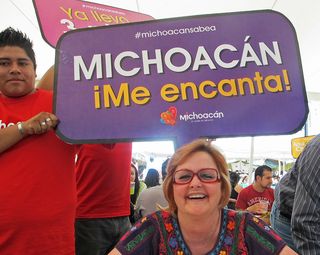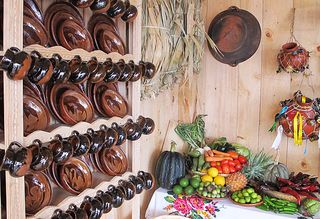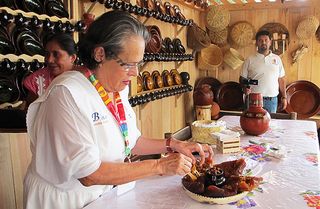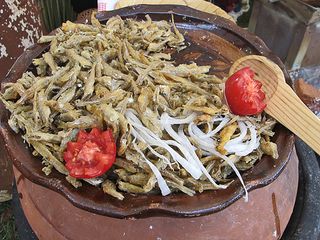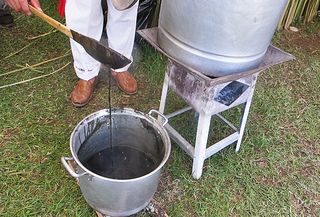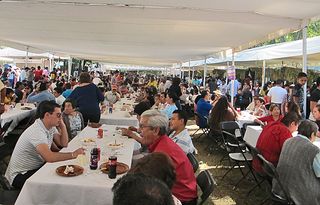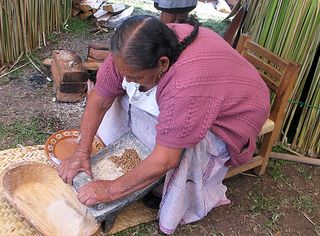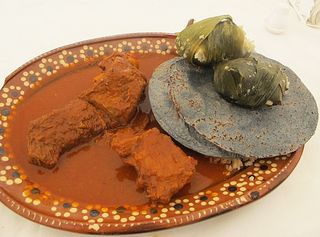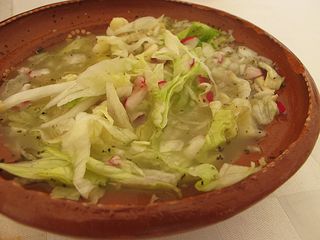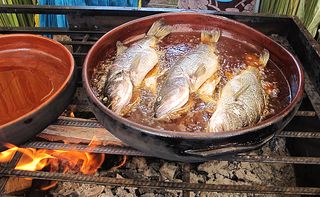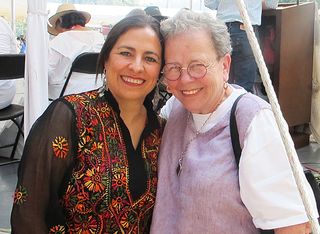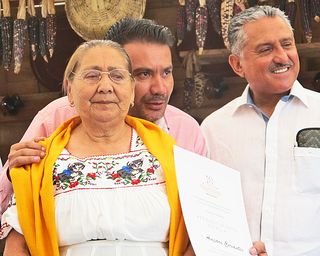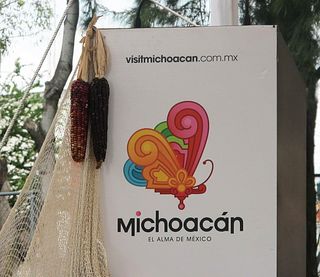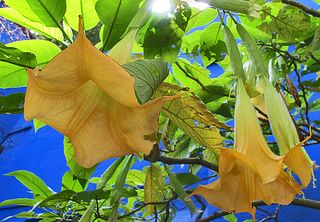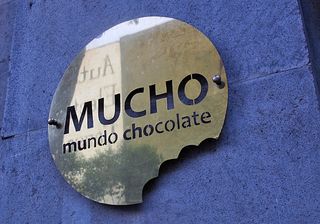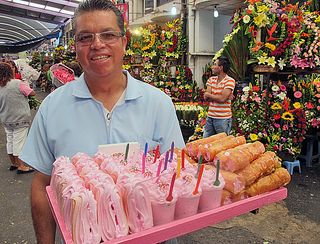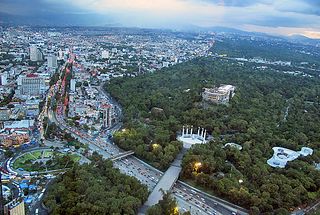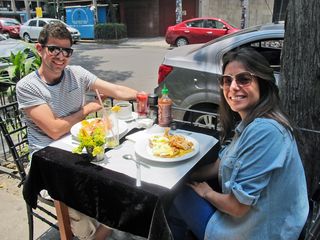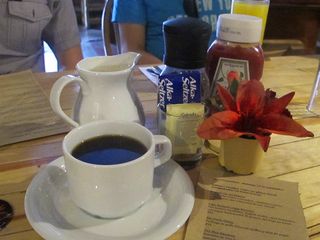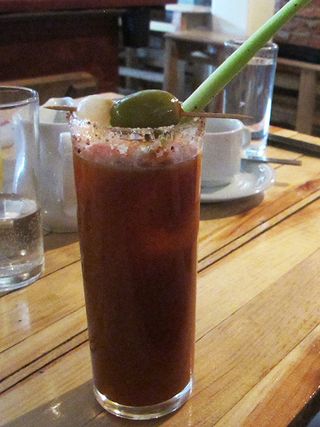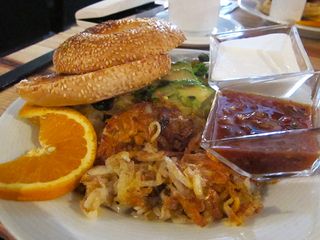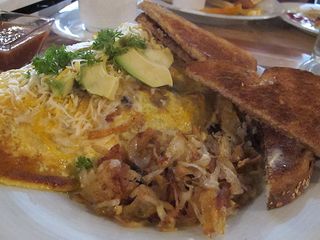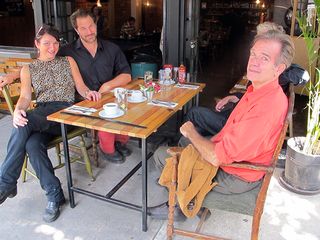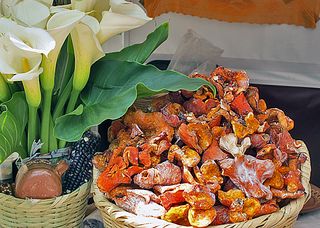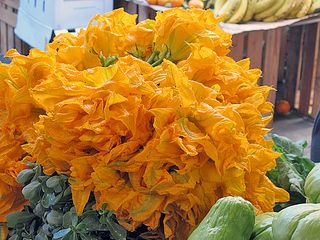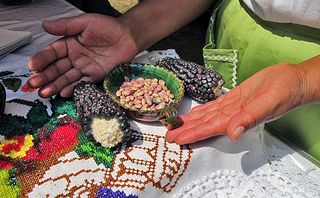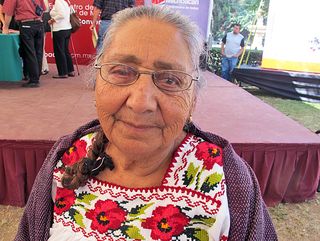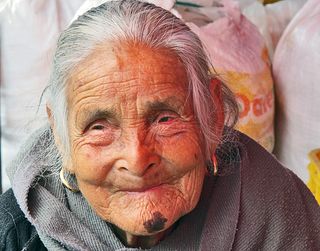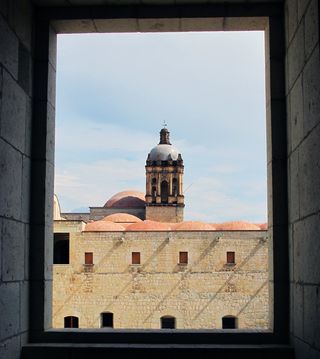
La bella Lula'a…beautiful Oaxaca, as said in the indigenous Zapotec language. You are looking through a window toward the Capilla del Rosario (Chapel of the Rosary) dome and bell tower, part of the Templo Santo Domingo.

This image of St. Peter (easy to identify because he is almost always depicted holding the keys of the kingdom) in Oaxaca's Templo Santo Domingo wears a tiny but knowing smile: he gets to live in Oaxaca!
Mexico Cooks! has visited Oaxaca and written several times about the city and its attractions, about the interesting differences of the city's markets from those of long-familiar central Mexico, the palate-tease of regional foods, a dream made real in another Oaxaca town. I had a good time, several times. But it didn't hit me, the loving lightning bolt of Oaxaca didn't strike me, until my most recent (notice I don't say last) trip to the city.

Winter is mandarina (tangerine) season in Mexico. These, vendor-stacked in pyramids outside Oaxaca's Mercado 20 de noviembre, caught late January light and presto! they turned into still life magic.
Those non-descript nouns and pallid adjectives (attractions, interesting) in the first paragraph tell the tale of how I felt about Oaxaca, until now. Where's the punch? The truth is, I just didn't get the thrill of Oaxaca, no matter how many visits I made. And then this time: YOWZA! I got it–or better said, it got me. Oaxaca, how could I have been so blind?
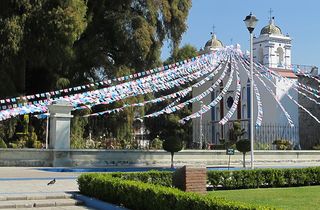
Templo Santa María de la Asunción (Church of St. Mary of the Assumption), the town parish in Santa María del Tule, just outside the city of Oaxaca. A small part of the famous ahuehuete tree, more than 2,000 years old, is visible on the left side of the photo.

The photo shows a knot more than five feet in diameter on the trunk of the ancient and enormous ahuehuete tree at the town Santa María de Tule. The knots have names–they're called everything from 'the elephant' to 'Carlos Salinas's ears'. At one time people believed that this behemoth was actually several trees, but it has been proven to be only one trunk measuring more than 30 feet in diameter.
What I once thought about Oaxaca has always been like at first sight, and second sight, and third, and so on. It's been similar to going to the movies with a friend and then POW, out of the blue, right between the eyes, it's so long just friends, you're panting for a goodnight kiss.
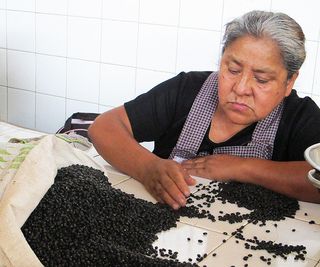
This woman, who sells dried chiles, beans, and spices at Oaxaca's Mercado 20 de noviembre, is cleaning frijol (dried black beans). You can see the white costal (large bag) at the left side of the photo. She picks out as many stones and twigs as she can find, but once you get the beans home, you'll need to sort through them again. Note: dried beans of any kind for sale in a market are called frijol. Once you cook them, they are frijoles.
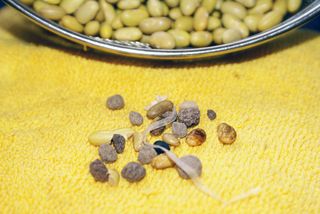
These stones and pieces of debris are typical of what you might find in any kind of newly purchased beans, whether from a bag you bought at a supermarket or bulk beans from a market. The beans in the photograph above are peruanos (so-called Peruvian beans).

This market stand is loaded with chapulines (grasshoppers), an iconic snack from Oaxaca. Seasoned with garlic or chile, these are really delicious. Mexico Cooks! prefers the tiny ones (at the top of the photo) to the larger sizes.
What changed? Not the city, surely. Oaxaca is a timeless glory. This trip, for reasons I can't explain, my heart and mind were entirely open to receive the city's gifts.
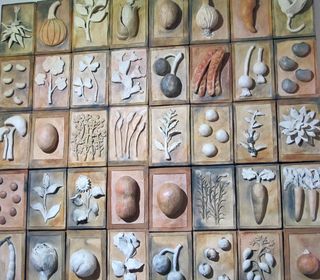
Wall of bas relief vegetables at my friend Pilar Cabrera's Restaurante La Olla, Calle de la Reforma 402, Col. Centro.
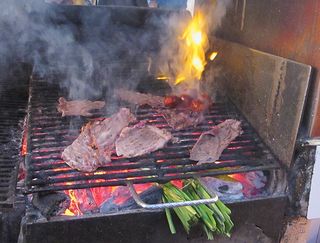
One stand in the famous callejón (alley) of carne asada (grilled meat) at Mercado 20 de noviembre. From the late afternoon moment that we saw this long hallway, lined as it was on both sides with carne asada stands and tables filled with ravenous carnivores, we knew this would be the spot for comida (Mexico's midday meal) the next afternoon.
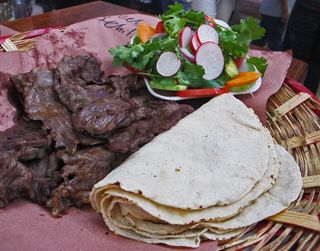
Our basket of tender grilled beef, hot tortillas, and a spritely salad. The side dishes we ordered–nopales, guacamole, grilled onions, the salad pictured above, and several others–disappeared just as fast as the kilo of carne asada and the pile of tortillas. Three of us ate and drank our fill for just about $20.00 USD.
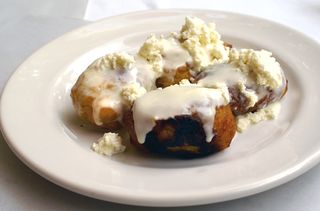
One of my personal favorite Oaxaca restaurants is the Istmo de Tehuantepec's La Teca, owned by the marvelous Sra. Deyanira Aquino. As part of another day's many-course main meal, friends and I shared these four molotes de plátano macho (small, sweetly ripe plantain croquettes) topped with crema de mesa (table cream) and queso fresco (fresh cheese), dividing the last one into smaller and smaller pieces so that one of us did not hog the whole thing–although each of us would have!

Paletas (in this case, lollipops) stand ready to welcome you to Oaxaca. For me, just for today, these represent the sweetness, color, variety, and delight that Oaxaca have to offer.
Come with me next week as we journey just outside the city of Oaxaca to make a new friend, a sister-soul of the cocina mexicana (the Mexican kitchen). I can't wait to introduce you; you'll love her just as much as I do.
Looking for a tailored-to-your-interests specialized tour in Mexico? Click here: Tours.




